A new resource has been launched to help bridge the gap between European Reference Networks (ERNs) and life sciences companies, aiming to advance research and care for people living with rare diseases. The Together For Rare Diseases (T4RD) Toolkit, introduced at a joint webinar by Together4RD and ERDERA on 23 June 2025, offers practical guidance for building and managing public-private partnerships in this complex field.
ERDERA, the European Rare Diseases Research Alliance, is a Horizon Europe initiative uniting over 170 organisations across 37 countries. Its mission is to position Europe as a leader in rare disease research and innovation, with a strong focus on patient involvement, cross-sector collaboration, and real-world impact. ERNs, meanwhile, are pan-European networks of healthcare providers established by the European Commission to improve diagnosis, care and research for rare diseases. These networks bring together expertise and data across borders, but many have limited experience of working with industry partners.
The new Toolkit is directly linked to ERDERA’s Work Package 25.4, which aims to strengthen the research capacity of ERNs and create a collaborative “ERN Living Lab.” This work package is part of ERDERA’s broader effort to align research roadmaps, foster innovation, and accelerate the translation of research into better care pathways.
Practical Guidance Rooted in Real Experience
Developed with input from more than forty stakeholders—including ERN coordinators, industry representatives, researchers and patient advocates—the Toolkit is structured in three main sections. The first section helps ERNs and companies understand each other’s structures, roles and motivations. The second offers practical advice for shaping research partnerships, including templates and examples from previous collaborations. The third section addresses the realities of project delivery, such as legal frameworks, governance and communication.
“Although there’s widespread recognition of the value ERN-industry collaboration can bring, there’s been a lack of practical guidance on how to initiate, structure and govern these partnerships—especially in less research-mature ERNs. This Toolkit aims to fill that gap,” said Dr Victoria Hedley, policy manager at Newcastle University.
A distinctive feature of the Toolkit is its grounding in real-world pilot projects. Three early collaborations—between BOND & Sanofi, ERKNet & Novo Nordisk, and EuroBloodNet & Takeda—are used to illustrate common challenges and practical solutions, from aligning expectations to building trust and managing different timelines. These examples highlight the importance of early alignment, transparency and realistic planning.
“At ERDERA, we are building a structured ecosystem that connects research, clinical infrastructure and private sector innovation. This Toolkit helps bridge a critical interface by providing the clarity and confidence needed to make partnerships work,” said Daria Julkowska, ERDERA Coordinator.
The Toolkit will be integrated into ERDERA’s Innovation Management Toolbox and will support the new ERN Living Lab, a platform for joint action and knowledge exchange. This is intended to help research move more quickly from the laboratory to improved care for patients.
Speakers at the launch emphasised that the Toolkit is a starting point, not a final answer. Further work is planned, including the development of shared legal templates and new forums for collaboration. There is also a call for clearer policy support to encourage ERN-industry partnerships.
“This Toolkit is not just a guide. It’s an instrument to unlock Europe’s competitive potential in rare disease R&D and to transform the landscape for patients who still wait for diagnosis, treatment and hope,” said Professor Maurizio Scarpa, Coordinator of MetabERN.
With this Toolkit, the rare disease community in Europe takes a practical step towards more effective collaboration, aiming to translate research into real benefits for patients.
Access the Toolkit here.

